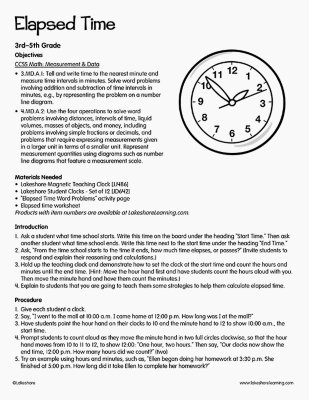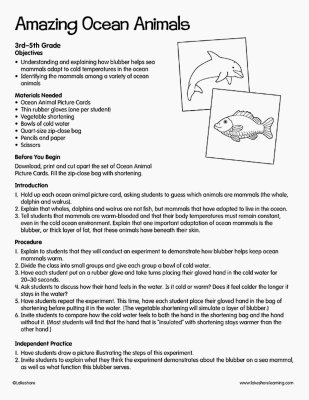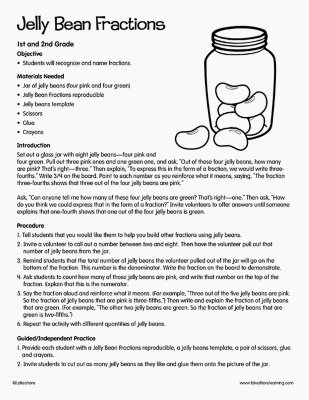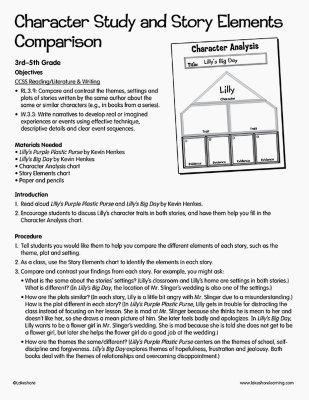Narrow by Grade
- Infant (0)
- Toddler (0)
- Preschool (0)
- Pre-K (5)
- Kindergarten (10)
- 1st (9)
- 2nd (7)
- 3rd (4)
- 4th (6)
- 5th (0)
- 6th & Up (0)
Grade 3rd
Narrow by Age
- 0-18m (0)
- 18-36m (0)
- 3 yrs. (0)
- 4 yrs. (0)
- 5 yrs. (0)
- 6 yrs. (0)
- 7 yrs. (0)
- 8 yrs. (4)
- 9 yrs. (2)
- 10 yrs. (0)
- 11 yrs. & Up (0)
Age
0 results for "seating/" , here are results for "setting"
Filters
Clear All
Elapsed Time
3rd Grade - 4th Grade
Objectives CCSS Math: Measurement & Data 3.MD.A.1: Tell and write time to the nearest minute and measure time intervals in minutes. Solve word problems involving addition and subtraction of time intervals in minutes, e.g., by representing the problem on a number line diagram. 4.MD.A.2: Use the four operations to solve word problems involving distances, intervals of time, liquid volumes, masses of objects, and money, including problems involving simple fractions or decimals, and problems that require expressing measurements given in a larger unit in terms of a smaller unit. Represent measurement quantities using diagrams such as number line diagrams that feature a measurement scale. Materials Needed Lakeshore Magnetic Teaching Clock Lakeshore Student Clocks - Set of 12 “Elapsed Time Word Problems” activity page Elapsed time worksheet Introduction Ask a student what time school starts. Write this time on the board under the heading “Start Time.” Then ask another student what time school ends. Write this time next to the start time under the heading “End Time.” Ask, “From the time school starts to the time it ends, how much time elapses, or passes?” (Invite students to respond and explain their reasoning and calculations.) Hold up the teaching clock and demonstrate how to set the clock at the start time and count the hours and minutes until the end time. (Hint: Move the hour hand first and have students count the hours aloud with you. Then move the minute hand and have them count the minutes.) Explain to students that you are going to teach them some strategies to help them calculate elapsed time.
View Lesson PlanAmazing Ocean Animals
3rd Grade
Objectives Understanding and explaining how blubber helps sea mammals adapt to cold temperatures in the ocean Identifying the mammals among a variety of ocean animals Materials Needed Ocean Animal Picture Cards Thin rubber gloves (one per student) Vegetable shortening Bowls of cold water Quart-size zip-close bag Pencils and paper Scissors Before You Begin Download, print and cut apart the set of Ocean Animal Picture Cards. Fill the zip-close bag with shortening. Introduction Hold up each ocean animal picture card, asking students to guess which animals are mammals (the whale, dolphin and walrus). Explain that whales, dolphins and walrus are not fish, but mammals that have adapted to live in the ocean. Tell students that mammals are warm-blooded and that their body temperatures must remain constant, even in the cold ocean environment. Explain that one important adaptation of ocean mammals is the blubber, or thick layer of fat, that these animals have beneath their skin.
View Lesson PlanJelly Bean Fractions
3rd Grade
Objective Students will recognize and name fractions. Materials Needed Jar of jelly beans (four pink and four green) Jelly Bean Fractions reproducible Jelly beans template Scissors Glue Crayons Introduction Set out a glass jar with eight jelly beans—four pink and four green. Pull out three pink ones and one green one, and ask, “Out of these four jelly beans, how many are pink? That’s right—three.” Then explain, “To express this in the form of a fraction, we would write three-fourths.” Write 3/4 on the board. Point to each number as you reinforce what it means, saying, “The fraction three-fourths shows that three out of the four jelly beans are pink.” Ask, “Can anyone tell me how many of these four jelly beans are green? That’s right—one.” Then ask, “How do you think we could express that in the form of a fraction?” Invite volunteers to offer answers until someone explains that one-fourth shows that one out of the four jelly beans is green.
View Lesson PlanCharacter Study and Story Elements Comparison
3rd Grade - 4th Grade
Objectives CCSS Reading/Literature & Writing RL.3.9: Compare and contrast the themes, settings and plots of stories written by the same author about the same or similar characters (e.g., in books from a series). W.3.3: Write narratives to develop real or imagined experiences or events using effective technique, descriptive details and clear event sequences. Materials Needed Lilly’s Purple Plastic Purse by Kevin Henkes Lilly’s Big Day by Kevin Henkes Character Analysis chart Story Elements chart Paper and pencils Introduction Read aloud Lilly’s Purple Plastic Purse and Lilly’s Big Day by Kevin Henkes. Encourage students to discuss Lilly’s character traits in both stories, and have them help you fill in the Character Analysis chart.
View Lesson Plan


